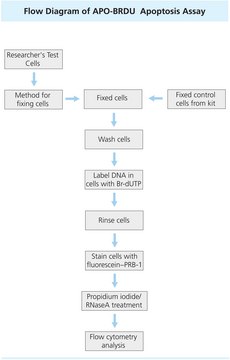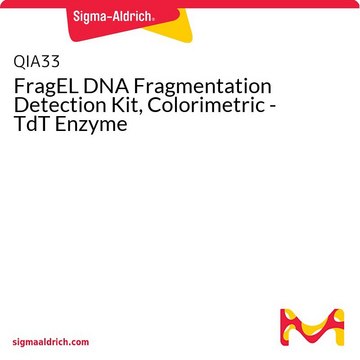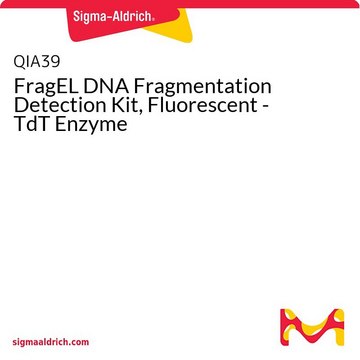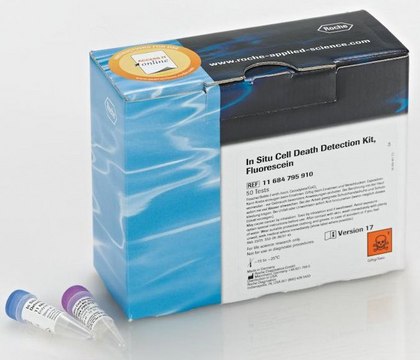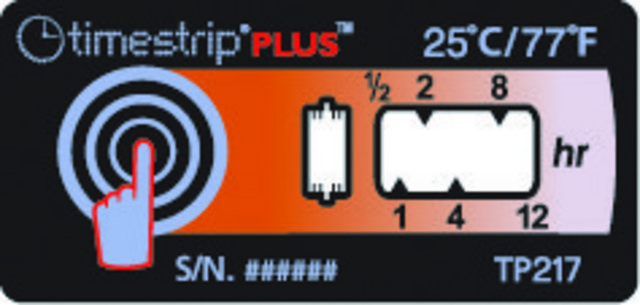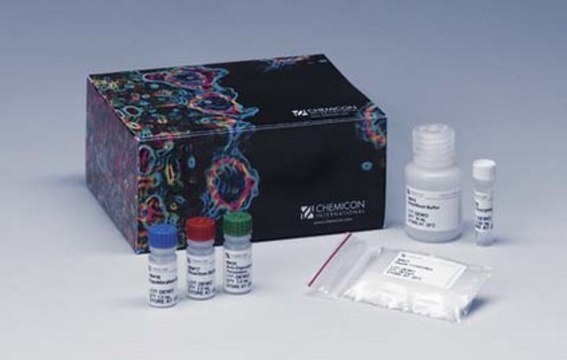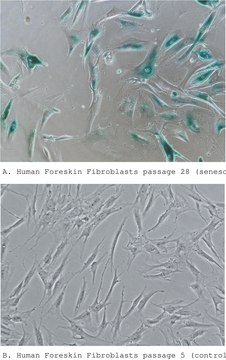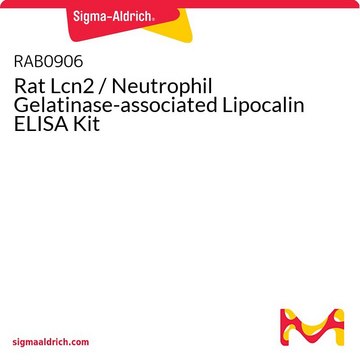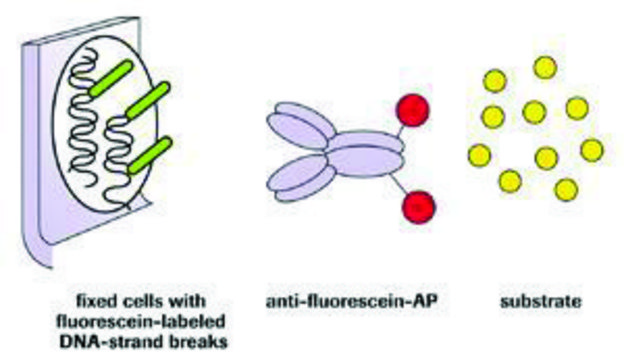Recommended Products
manufacturer/tradename
Roche
storage condition
avoid repeated freeze/thaw cycles
General description
Application
- Quickly determine apoptosis induction for cell-based workflows in life science research.
- Reliably perform screening assays in product development, e.g., cancer research, pre-clinical safety.
- Accurately measure malignant cell sensitivity in cancer research.
Features and Benefits
- Optimized for data evaluation with Roche′s Cellavista System. Obtain reproducible results using automated imaging with this system.
- Saves time and resources: Total assay time, including analysis, for a 96-well microplate is 85 minutes.
- Reduced risk of losing cells with fewer washing steps in an improved protocol.
Packaging
Quality
Principle
Genomic DNA cleavage during apoptosis produces double-stranded, low molecular weight DNA fragments (mono- and oligonucleosomes), as well as single strand breaks (nicks) in high molecular weight DNA. These DNA strand breaks are identified by labeling free 3′-OH termini with modified nucleotides in an enzymatic assay known as the TUNEL reaction. The TUNEL reaction preferentially labels DNA strand breaks generated during apoptosis. TUNEL assays discriminate apoptosis from necrosis, and from primary DNA strand breaks induced by cytostatic drugs or irradiation. The DNA Fragmentation Imaging Kit labels DNA strand breaks using terminal deoxynucleotidyl transferase (TdT). TdT catalyzes polymerization of labeled nucleotides to free 3′-OH DNA ends in a template-independent manner using the TUNEL reaction. Fluorescein incorporated in nucleotide polymers is detected and quantified using fluorescence microscopy.
Staining of nuclei
Hoechst 33342 is a cell-permeable stain that binds DNA. It is used to stain nuclei of living or dead cells.
Preparation Note
Storage and Stability
Other Notes
Kit Components Only
- Nuclei Dye (blue cap), for fluorimetric determination of cell count based on labeling of cell nuclei
- Enzyme Solution (yellow cap), for labelling of free 3′-OH termini of DNA fragements with fluorescein dUTP
- Label Solution (clear cap), containing a nucleotid mix with fluorescein dUTP in reaction buffer
Signal Word
Danger
Hazard Statements
Precautionary Statements
Hazard Classifications
Aquatic Chronic 2 - Carc. 1B - Muta. 2 Inhalation
Storage Class Code
6.1D - Non-combustible, acute toxic Cat.3 / toxic hazardous materials or hazardous materials causing chronic effects
WGK
WGK 3
Flash Point(C)
does not flash
Regulatory Information
Choose from one of the most recent versions:
Certificates of Analysis (COA)
Don't see the Right Version?
If you require a particular version, you can look up a specific certificate by the Lot or Batch number.
Already Own This Product?
Find documentation for the products that you have recently purchased in the Document Library.
Articles
Cellular apoptosis assays to detect programmed cell death using Annexin V, Caspase and TUNEL DNA fragmentation assays.
Our team of scientists has experience in all areas of research including Life Science, Material Science, Chemical Synthesis, Chromatography, Analytical and many others.
Contact Technical Service